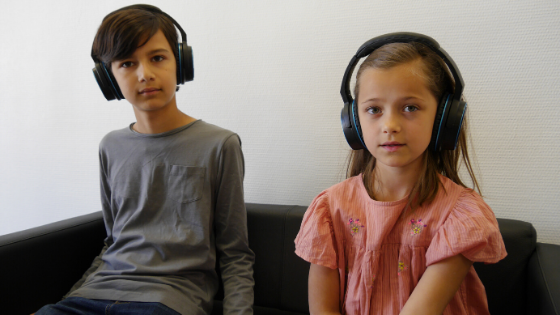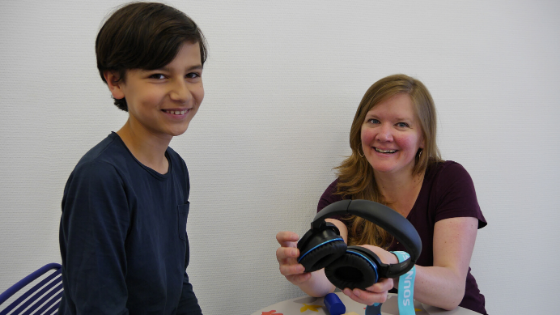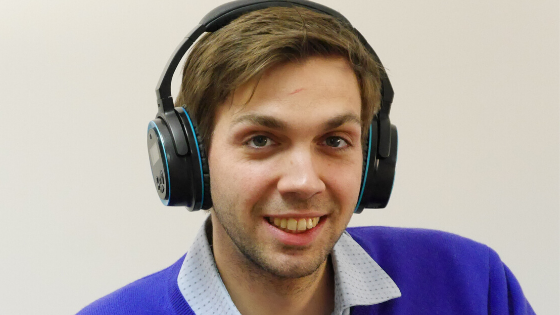We, as humans, are very social creatures and this socialness is something that is often difficult for individuals on the Autism Spectrum. As therapists, you work with a variety of different individuals with some on the Autism spectrum and some not. This month we are going to focus on all those clients you see who have some form of Autism.

SYMPTOMS OF AUTISM
The spectrum of Autism is very broad as are the symptoms and severity of symptoms. If you try to google “Autism", you are bound to get bombarded with heaps of information and resources about the topic. Some of the main areas that are involved are social skills and communication:
- Not responding when their name is called
- Avoiding eye contact
- Preferring to play alone
- Not sharing interests with others
- Having obsessive interests
- Does not point
- Language delays
- Does not use language to communicate, echolaliac
Sensory motor and sensory processing development is another area that is often involved in individuals with Autism:
- Poor motor skills – gross, fine and visual
- Poor imitation skills
- Lack of pretend play
- Flaps hands; rocks body
- Prefers to look at things that spin
- Hypersensitive or hyposensitive to touch, tastes, smells, movement
- Hypersensitive or hyposensitive to auditory information
The list could go on and on. You as the therapist are often looking for new ways to work with these types of clients. Learning new ways to use your therapeutic self, trying new Sensory integration strategies and ideas, and or entering into the auditory and listening therapy world. As many of you know, there are many auditory programs that are out there and the information can be overwhelming and difficult to navigate. What we are here to talk about this week is a tool called Soundsory.
THE SOUNDSORY PROGRAM
In this article, I am going to detail the nuts and bolts of the Soundsory program so that you can get a better understanding of how the program works. More specifically, it will give you a better understanding of how it can be beneficial for your clients on the Autism spectrum.
What Soundsory is in a nutshell, is a 40 day program that consists of less than 30 minutes of listening per day. The last 2-3 minutes of listening is paired with an optional exercise program. The whole program is inside the headsets, so you do not need an additional cable to connect to a device that contains the music. Everything is within the headphones itself which is awesome! The only time you need a cable is when you have to charge the device. If you want to follow along with the video exercises you will need a computer to follow along and watch how to do them. As therapists, many of the exercises will look familiar to you. This was done on purpose. Since you or your clients will purchase the headsets, exercises that did not involve purchasing another piece of equipment or hunting around the clinic or home to see if you had that piece of equipment, were included.
The exercises just involve the body. They range from reflex integration, coordination exercises, gross and fine motor and some visual exercises. Again these exercises are optional and not all of your clients will be able to do them whether it is due to age, skill level, imitation and copying abilities. You can create your own exercises or as therapists know, modify and adapt to meet the needs of your clients. We will talk about this in our next blog post!
That was a very brief overview of the program. Now we will get into the technical aspects of the program itself..

THE HEADPHONES – AT A GLANCE
The headphones contains 40 days of programmed music. On the menu display, you will see Day 1.1 and day 1.2, and so on until day 40. Each day with a .1 after it has 9 tracks of music. Every day with a .2 after it has just 1 track of music that is designed to be paired with the exercises. The 9 tracks of music consist of Jazz, Latin, Gospel, Marches, and Children songs. In addition there are some classical pieces like Strauss, Hayden, and Bach. All of the music has been specifically designed with an emphasis on rhythm. In addition, the headset delivers the music through both bone conduction and air conduction. It also consists of a dynamic filter which acts as a gating system providing a complete workout for the brain.

“This is great but how do I relate this to my kids on the Autism spectrum? Why would I recommend this program to families?"
In our everyday lives we are always listening through sounds transmitted through bone conduction and air conduction and the observed delay is negligible. If there were delays, the auditory world would be a very confusing and disorienting environment. Our brains are endowed with mechanisms that detect changes, update the information and predict the outcome. This is something that does not function well in individuals on the Autism spectrum. They often need extra time to anticipate a change of routine, or to comprehend and process verbal information. Often times individuals on the Autism spectrum are also hypersensitive to sounds, struggle to block out sounds or not able to tune into sounds in general.
Just listening to music on headsets is not the same as listening to the Soundsory program because of two key things – the gating system, which is the core of the Soundsory technique and the time of preparation that goes along with the gating. These times enable the brain to process the incoming information conveyed by the gating. Soundsory, through its specific technique of gating helps individuals with Autism, anticipate, adapt and process the incoming information. This is key for many individuals on the Autism spectrum as they continue to learn and grow.
In addition to the above, this program also places a strong emphasis on all that relates to motor. Often times individuals on the Autism spectrum have poor motor skills; low muscle tone, difficulty playing sports, throwing and catching, hopping, jumping, all things related to the vestibule part of the ear. Difficulty with communication skills which is closely linked to our auditory system, repetition of words, echolaliac, difficulty finding words. As therapists, you work with clients who have Autism but what you are trying to do is help develop those motor skills gross fine or visual, help them develop those communication and interaction skills, help them want to connect and relate. Most of you probably have very busy caseloads seeing kids 1-2 times per week not including all the paperwork that is involved. It is not going to replace the direct face to face therapy sessions which are so important for individuals on the autism spectrum but what if you had a tool that could continue to help develop those motor skills you’ve been working on or the ability to communicate easier, and it only required 25 minutes of listening per day? Wouldn’t you think Soundsory would be a great tool to recommend?
Click here to read this great story about a little boy that I worked with who was on the Autism spectrum and had many of the motor skills and communication skills I previously mentioned in this post.
Thank you for reading!

